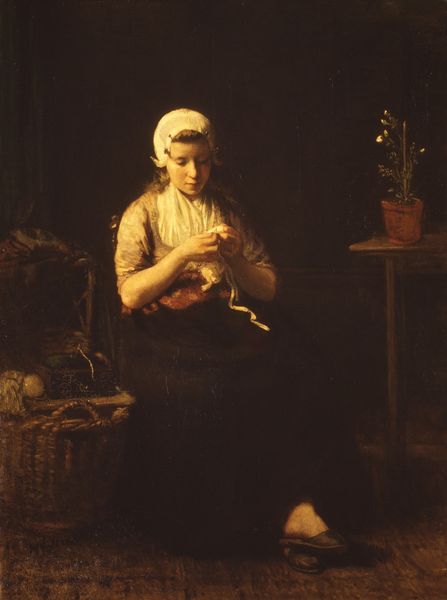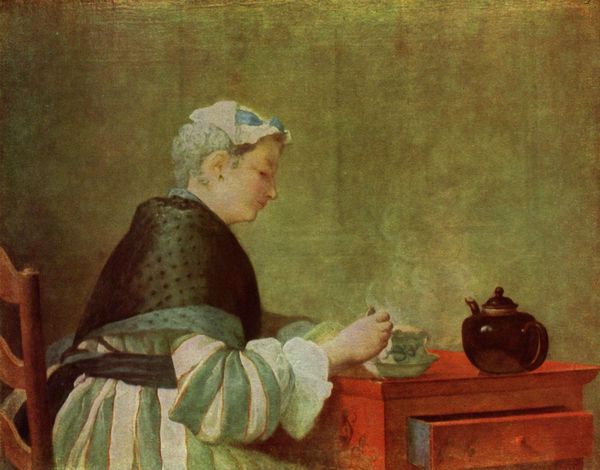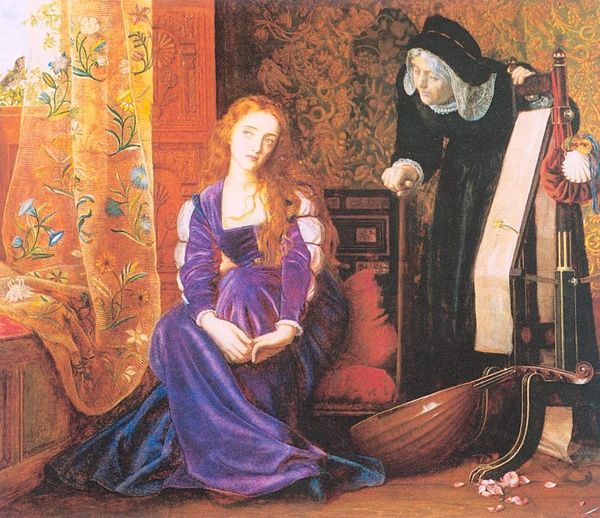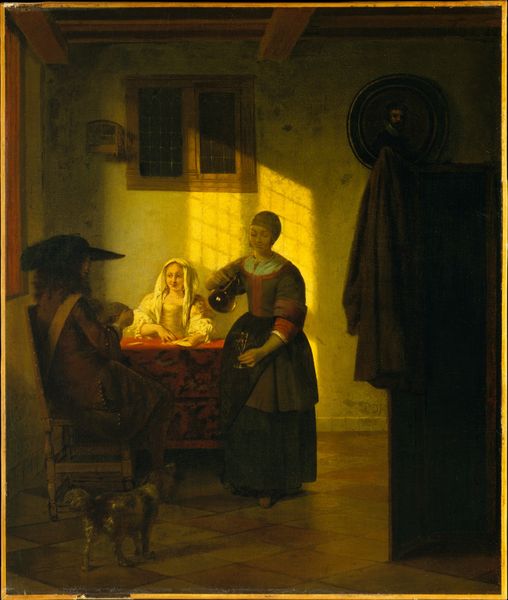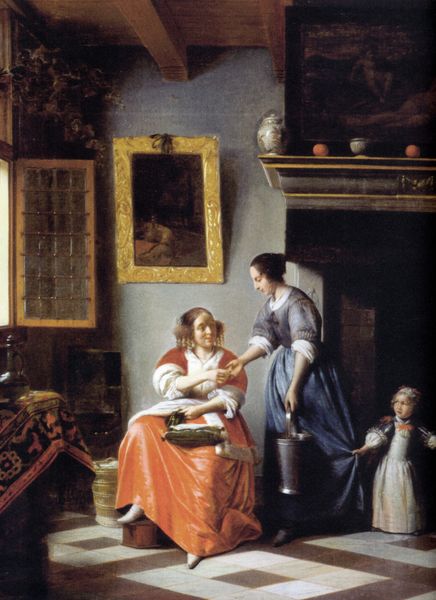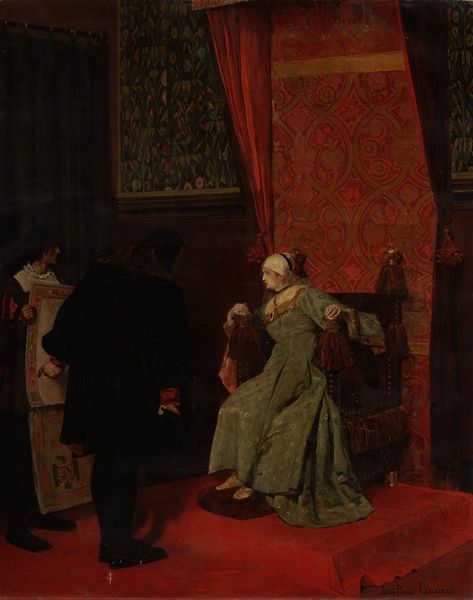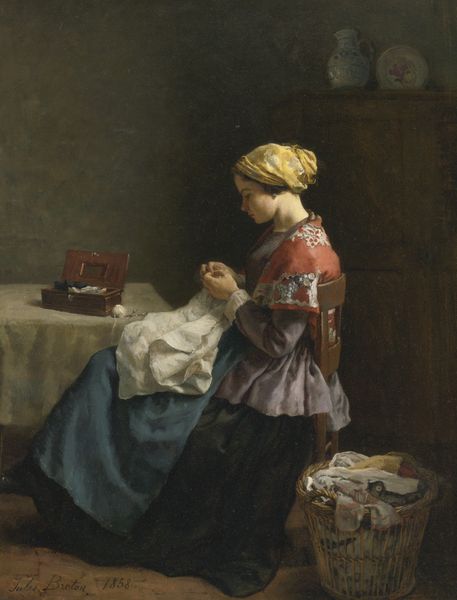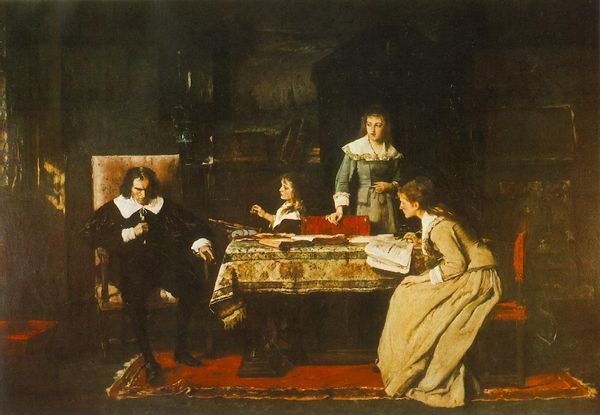
painting, oil-paint, impasto
#
portrait
#
painting
#
oil-paint
#
sculpture
#
impasto
#
historical fashion
#
romanticism
#
genre-painting
#
academic-art
#
realism
Copyright: Public domain
Rudolf Ernst painted this image of two women indoors, in what appears to be the late 19th century. At its heart, the painting presents us with potent symbols, with the act of reading being the most dominant. Consider, if you will, the iconography of the book and its reader. Throughout history, we have seen countless depictions of individuals immersed in texts. Whether it is a saint with scripture, or a scholar poring over ancient texts, the reader is a figure of knowledge, reflection, and, at times, transformation. We see it echoed in medieval manuscripts and Renaissance portraits alike. The rose, delicate and fresh, placed between the women, is also a telling motif. It can be found in ancient Greek art, often connected with Aphrodite, the goddess of love. Here, it adds layers of meaning—perhaps evoking unspoken emotions or latent desires. This symbol, like the rose, undergoes a metamorphosis, reminding us of the continuous interplay between the past and the present. The viewer is subconsciously drawn into the silent narrative of intimacy and personal experience.
Comments
No comments
Be the first to comment and join the conversation on the ultimate creative platform.

